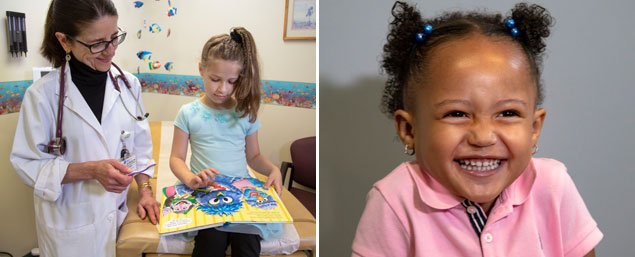





Making sure your patients have good oral health is an important facet of pediatrics. As a primary healthcare provider, you know that dental disease is among the most prevalent chronic diseases of childhood. Children with dental disease suffer needlessly from a very highly preventable problem and are at risk for further health issues.
You can make a huge difference in the lives of children by incorporating oral health into all well child visits, stressing the importance of good oral hygiene, helping to identify potential dental problems, referring children to a dental home, and giving advice on good nutrition to prevent dental disease and help kids stay healthier. Untreated dental disease can be painful and costly. Your preventive care can keep children out of the emergency department and eliminate the need for dental treatment in a hospital operating room.
With so many things to address at a well child visit, many pediatricians don’t feel they have the time to include oral health checks into an already packed appointment. However, integrating oral health into your well child visits is both logical and practical since you are perfectly positioned to be the first line of defense against childhood dental disease.
Consider addressing oral health in your well child visits and put your patients on the path to a lifetime of healthy smiles!
The American Academy of Pediatrics (AAP) Children’s Oral Health Website has Oral Health Practice Tools and a free Oral Health Risk Assessment Tool.
For more information from the AAP on oral health, please see:
AAP Policy Statement on Oral Health Risk Assessment Timing and Establishment of the Dental Home
AAP Policy Statements on Oral Health
AAP Recommendations for an Oral Health Risk Assessment
Here are some resources for additional links:
Open Wide: Oral Health Training for Health Professionals
This is a series of four modules designed to help health and early childhood professionals working in community settings (for example, Head Start and WIC staff) promote oral health in the course of promoting general health for infants, children, and their families.
Opening the Mouth: Oral Health and Health Care
This interactive tutorial provides an overview of the relationship between maternal oral health and child health. By following the experience of Mrs. Perez and her daughter Maria, the user learns about maternal-child oral health issues from conception through toddler years.
Oral Health Pocket Guide (Bright Futures in Practice)
This guide is designed to help health professionals implement specific oral health guidelines during pregnancy, postpartum, infancy, early childhood, middle childhood, and adolescence. It addresses risk assessment for dental caries, periodontal disease, malocclusion, and injury.
Smiles for Life Oral Health Curriculum
Smiles for Life was developed by the Society of Teachers of Family Medicine Group on Oral Health and is endorsed by the American Academy of Pediatrics, American Academy of Family Physicians, the American Dental Association, and many other professional organizations.
Smiles for Life is a comprehensive oral health module that can help you integrate oral health into your practice. You can learn to assess risk factors for tooth decay, perform oral health examinations, and counsel patients on preventative techniques.
Each of the courses in the curriculum is free and available online, and allows you to progress at your own pace. Free Continuing Education credits are available.
Take advantage of the Smiles for Life Curriculum and become the first line of defense against childhood dental disease.
US Preventive Services Task Force Recommendation Statement: Prevention of Dental Caries in Children From Birth Through Age 5 Years (2014)
The U.S. Preventive Services Task Force recommends that primary care clinicians prescribe oral fluoride supplementation starting at age 6 months for children whose water supply is deficient in fluoride and that primary care clinicians apply fluoride varnish to the primary teeth of all infants and children starting at the age of primary tooth eruption. Read more here.
